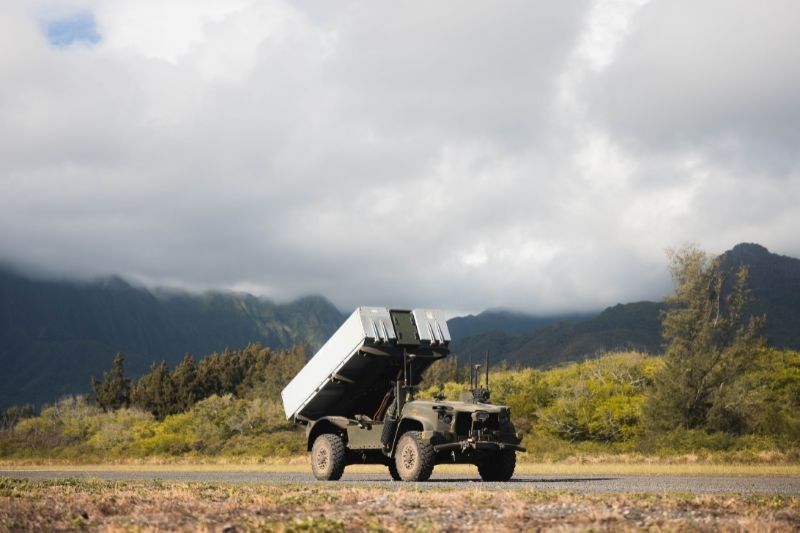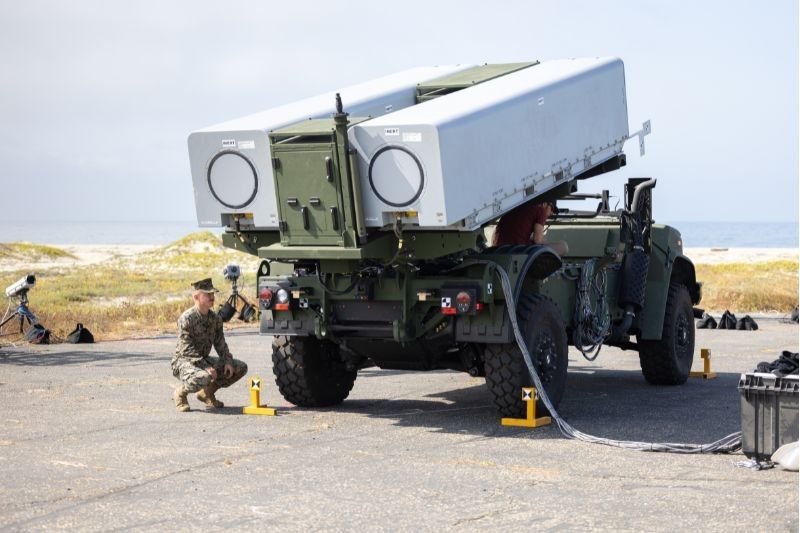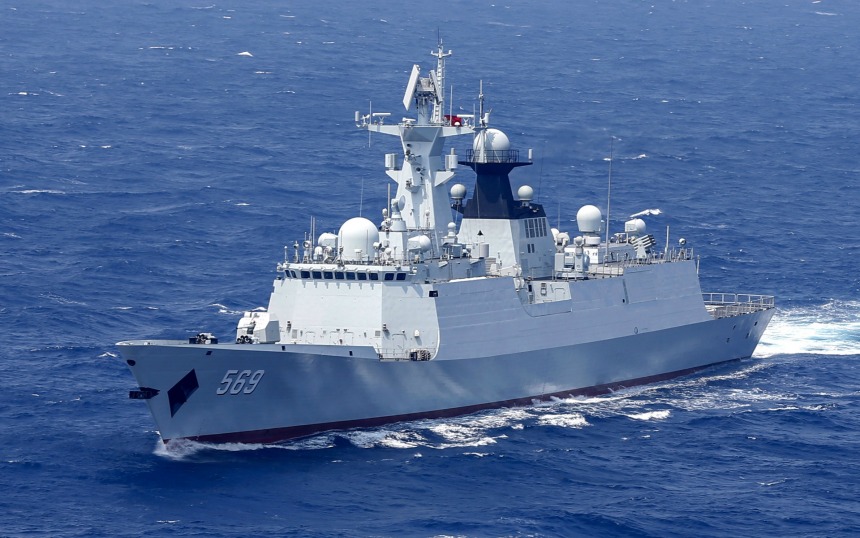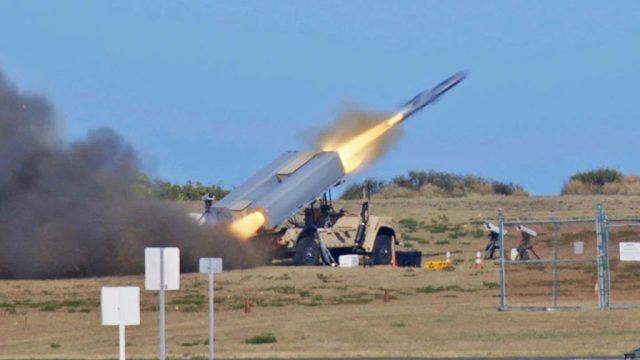Missiles at China’s Doorstep: U.S. Positions NMESIS Missile System in Luzon Amid Rising Indo-Pacific Tensions
This unprecedented deployment brings U.S. land-based missile systems to their closest proximity yet to mainland China, a clear signal of Washington’s escalating focus on force projection and deterrence along the critical First Island Chain.
(DEFENCE SECURITY ASIA) — In a bold and strategically calculated move, the United States Marine Corps (USMC) has forward-deployed its cutting-edge Navy-Marine Expeditionary Ship Interdiction System (NMESIS), armed with Naval Strike Missiles (NSM), into the geopolitically volatile Luzon Strait—one of the world’s most contested and strategically vital maritime corridors.
This unprecedented deployment brings U.S. land-based missile systems to their closest proximity yet to mainland China, a clear signal of Washington’s escalating focus on force projection and deterrence along the critical First Island Chain.
The confirmation came directly from Brigadier General Michael Logico, Assistant Exercise Director and spokesperson for Exercise Balikatan, the flagship annual U.S.-Philippines military drill.
“I will confirm that NMESIS is already in the country,” Logico stated during a press conference held at Camp Aguinaldo in Quezon City.
“I will not say where it is, but it is going to participate. It’s going to be part of the exercises,” he added.
Exercise Balikatan 2025—marking the 40th edition of the bilateral exercise—will run from April 21 to May 9, featuring some of the most advanced joint interoperability drills between both forces to date.
The NMESIS launcher, a land-based precision strike platform designed to destroy surface threats at long ranges, integrates the highly maneuverable Naval Strike Missile, a subsonic sea-skimming cruise missile developed by Norway’s Kongsberg and American defense giant Raytheon.

With a combat radius exceeding 185 kilometers, the NSM provides unmatched lethality and survivability, capable of evading modern air defenses and delivering pinpoint accuracy against maritime targets.
Its deployment significantly upgrades the U.S. Marine Corps’ ability to perform coastal denial operations, offering a rapid, mobile and lethal solution to counter hostile naval movements in contested waters.
Strategically located, the Luzon Strait serves as a critical maritime passage that connects the South China Sea with the Philippine Sea and the wider Western Pacific—effectively acting as a strategic fulcrum in the Indo-Pacific theatre.
For Washington, this strait is indispensable to its regional warfighting architecture, offering vital access to the First Island Chain—an arc of islands stretching from Japan through Taiwan and the Philippines—which forms the backbone of U.S. Indo-Pacific deterrence strategy.
Through systems like NMESIS and the NSM, the United States is operationalizing its archipelagic defense doctrine, designed to nullify China’s Anti-Access/Area Denial (A2/AD) capabilities and constrain Beijing’s naval ambitions beyond its littoral zones.
Given the strait’s proximity to Taiwan’s southeastern flank, it also provides an ideal platform for surveillance, early warning, and interdiction of potential People’s Liberation Army (PLA) maritime incursions in the event of a cross-strait conflict.

Control over or even persistent monitoring of the Luzon Strait bolsters Washington’s ability to respond swiftly and decisively in defense of Taiwan, a scenario increasingly contemplated by defense planners in both the Pentagon and Indo-Pacific Command.
Simultaneously, the deployment affirms America’s unwavering commitment to preserving the principle of Freedom of Navigation Operations (FONOP) in international waters, particularly amid intensifying Chinese maritime assertions across the South China Sea.
By placing advanced missile systems on Luzon, the United States is not only hardening its regional military footprint but also reinforcing the global norms that underpin lawful access to vital sea lanes.
For China, however, the Luzon Strait represents a strategic artery vital to its maritime and nuclear force posture, particularly for its submarine fleet.
It is one of the few deep-water transit routes that allow PLAN vessels, including its Jin-class nuclear-powered ballistic missile submarines (SSBNs) stationed at Hainan, to slip into the open waters of the Pacific Ocean without traversing the heavily monitored South China Sea.
The ability of these SSBNs to conduct undetected deterrent patrols in the Pacific is essential to ensuring the credibility of China’s second-strike nuclear capability.

Yet this strategic mobility is now increasingly threatened by growing U.S. surveillance and interdiction capabilities positioned squarely in the Luzon Strait.
This development risks constraining Beijing’s freedom of movement, raising concerns that its deterrent platforms may be tracked, compromised, or neutralized before they can execute a retaliatory strike.
Geographically, Luzon sits squarely between Taiwan and northern Philippines—two pivotal nodes in the Indo-Pacific strategic lattice—making it a probable flashpoint or avenue for encirclement should a Taiwan contingency erupt.
A sustained American or allied military build-up in Luzon could effectively bottleneck China’s naval forces within the First Island Chain, while simultaneously augmenting Taiwan’s defensive maritime shield.
In this regard, the Luzon Strait is not just a navigational chokepoint—it is a strategic pressure valve whose control could tilt the balance in any future Indo-Pacific conflict.
For Washington, it offers a forward-operating platform to deny Chinese expansion, launch long-range precision strikes, and uphold commitments to regional allies.
For Beijing, it is the gateway to strategic depth, nuclear deterrence, and breakout capability into the Pacific.

The inclusion of NMESIS in Exercise Balikatan 2025 forms part of a wider deployment of advanced American capabilities, including integrated air defense systems and high-tech sensor networks aimed at elevating joint readiness and survivability.
The exercise, whose name translates to “shoulder-to-shoulder,” reflects not only bilateral military cooperation but the growing convergence of strategic interests between Washington and Manila.
The decision to base NMESIS in the Philippines was reportedly finalized during a recent visit by U.S. Secretary of Defense Pete Hegseth, who unveiled a broader security assistance package for Manila.
“We have agreed that the United States will deploy more advanced military assets to the Philippines, including the NMESIS anti-ship missile system and high-capability unmanned surface vessels (USVs) during Balikatan this April,” said Hegseth.
“These systems will allow U.S. and Philippine forces to train jointly using modern combat technologies to defend Philippine sovereignty,” he added.
The Secretary also voiced concern over China’s increasingly belligerent posture across the region, citing coercive maritime actions and territorial expansion in disputed waters.
Manila remains embroiled in a protracted territorial dispute with Beijing in the South China Sea, where China claims nearly 90 percent of the waters under its so-called “nine-dash line”—a claim invalidated by international law but aggressively enforced through militarized artificial islands and constant naval patrols.


The NMESIS deployment follows last year’s headline-making arrival of the Mid-Range Capability (MRC) missile system, also known as “Typhon,” which can launch both the SM-6 multi-role missile and Tomahawk cruise missiles.
The deployment of Typhon triggered sharp protests from Beijing due to its range of up to 2,000 kilometers, bringing large swathes of China’s eastern coastline within direct missile reach from Philippine soil.
From northern Luzon, Typhon batteries can strike China’s military installations constructed atop reclaimed reefs in the South China Sea, complicating Beijing’s calculus in any future regional conflict.
Each Typhon unit comprises four mobile launchers, a command-and-control node, and support vehicles, and is operated by the U.S. Army’s Strategic Fires Battalion, which also includes High Mobility Artillery Rocket Systems (HIMARS) and the newly introduced Dark Eagle hypersonic missiles.
Together, the deployments of NMESIS and Typhon symbolize a transformative shift in America’s force posture across the First Island Chain—effectively converting Luzon into a forward-operating missile bastion designed to contain Beijing’s reach and uphold the evolving security architecture of the Indo-Pacific.
— DEFENCE SECURITY ASIA


